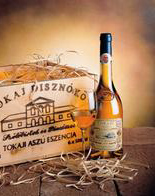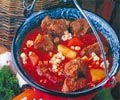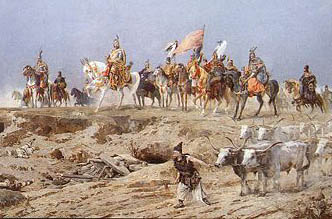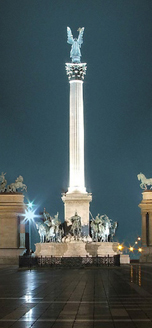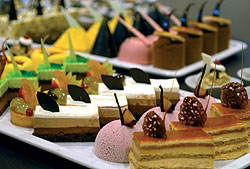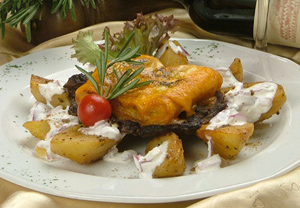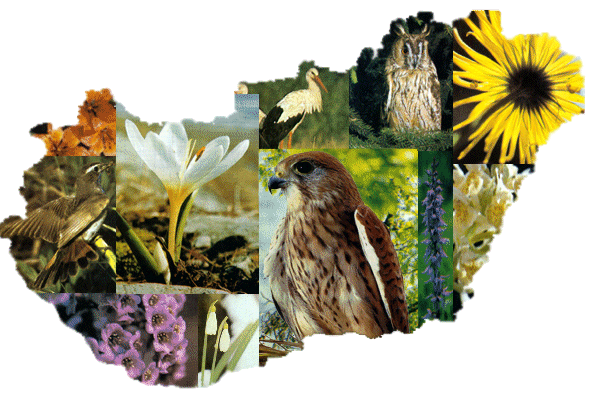
Do extra-terrestrial beings exist? - the Nobel Prize winning Italian physicist, Enrico Fermi, was once asked by his disciples in California. "Of course", Fermi answered - "they are already here among us, they are called Hungarians..."
The Republic of Hungary is a country in Central Europe, bordered by Austria, Slovakia, Ukraine, Romania, Serbia, Croatia, and Slovenia. Its capital city is Budapest. Hungary is, among others, the member of the UN, WTO, OECD, NATO, EU. The mother-tongue is Hungarian, part of the Finno-Ugric language family, relative of the Finnish and Estonian languages. Hungary is the member state of the Visegrád Group, which was founded in the Hungarian town of Visegrád in 1991 as a political and economic alliance of three closely related nations (four with the dissolution of Czechoslovakia) based on historical and geographical connections. Hungary's current goal is becoming a developed country in the foreseeable future.
Despite its quite small size, Hungary is the home of nine World Heritage Sites (the Buda Castle, Hollókő, Hortobágy, Heroes Square and Andrássy Avenue in Budapest etc.), and five UNESCO Biosphere reserves (Duna-Dráva National Park, Balatonfelvidék etc.). The country is home to the second largest thermal lake in the world (Lake Hévíz), the largest lake in Central Europe (Lake Balaton), and the largest remaining grasslands in Central Europe (Hortobágy). In terms of manmade structures, Hungary is home to the largest synagogue in Europe (Great Synagogue), the third largest church in Europe (Esztergom Basilica).
Name: Gaàl Gabriella
Nationality: Hungarian
Age: 21
Home country: Hungary
Hungary's history: stormy, wild, various
General feeling in Hungary: cloudy, pessimistic
History
Hungarian tribes from Western Asia entered the Carpatian Basin in 895 and established the state of Hungary. In 1000 St; Stephen, our first king established the Christian Kingdom of Hungary. During the upcoming centuries the Hungarians enlarged their territory over large parts of Central Europe, including big parts of the present Croatia, Romania and Slovakia. Hungary was occupied by the Ottoman Empire in 1526. The northern and eastern parts of Hungary could avoid Ottoman rule.
The northern part accepted the Austrian Habsburgs as kings in 1526, so it jointed a personal union with Austria. Gradually the Ottomans were driven out of Hungary. In 1849, after the 1848-49 Rebellion and Uprising, Hungary was formally annexed to Austria. In 1867 Austria was restyled into the Austro-Hungarian Monarchy, of with the Kingdom of Hungary is one of the two constituent parts. After the defeat of Austria-Hungary in World War I, we lost the two third parts of our country. Hungary became independent as the parliamentary democratic Hungarian People's Republic in 1918.
In 1944/1945 Hungary was invaded by the USSR. It was in 1989, that the communist gave up power without fight and Hungary became a parliamentary democratic republic. The present Chief of State is called László Sólyom, and the Prime Minister is Ferenc Gyurcsány, the leader of the Hungarian Socialists Party.
Science
We are very proud of our inventions. These include the noiseless match (János Irinyi), Rubik's cube (Ernő Rubik), and the krypton electric bulb (Imre Bródy). A number of other important inventions, including holography (Dennis Gabor), the ballpoint pen (László Bíró), the theory of the hydrogen bomb (Edward Teller), and the BASIC programming language (John Kemeny, with Thomas E. Kurtz), were invented by Hungarians.
Sport
One of the most famous Hungarians is the footballer Ferenc Puskás (1927 – 2006). He scored 84 goals in 85 internationals for Hungary. Puskás played the 1954 World Cup final against West Germany. In 1958, after the Hungarian Revolution, he emigrated to Spain where he played in the legendary Real Madrid team that also included Alfredo Di Stéfano, and Francisco Gento. Hungarians are also known for their prowess at water sports, mainly swimming, water polo and canoeing; this can be said to be surprising at first, because Hungary is a landlocked country. On the other hand, the presence of two major rivers (the Duna and the Tisza) and a major lake (Balaton) give excellent opportunities to practice these sports. Some of the world's best sabre fencing athletes have historically started from Hungary as well.

Hungarian cuisine is also a prominent feature of Hungarian culture, with traditional dishes such as goulash (gulyás or gulyásleves- it is a soup not stew!) a main feature of the Hungarian diet. Dishes are often flavoured with paprika. Stews are often to be found with typical elements such as pork or beef, for example as used in pörkölt. There are also many desserts that are usually flavoured with fruit and pastry based (rétes).Food is a big part of the Hungarian culture and it is viewed often as rude to not accept it when it is offered.
